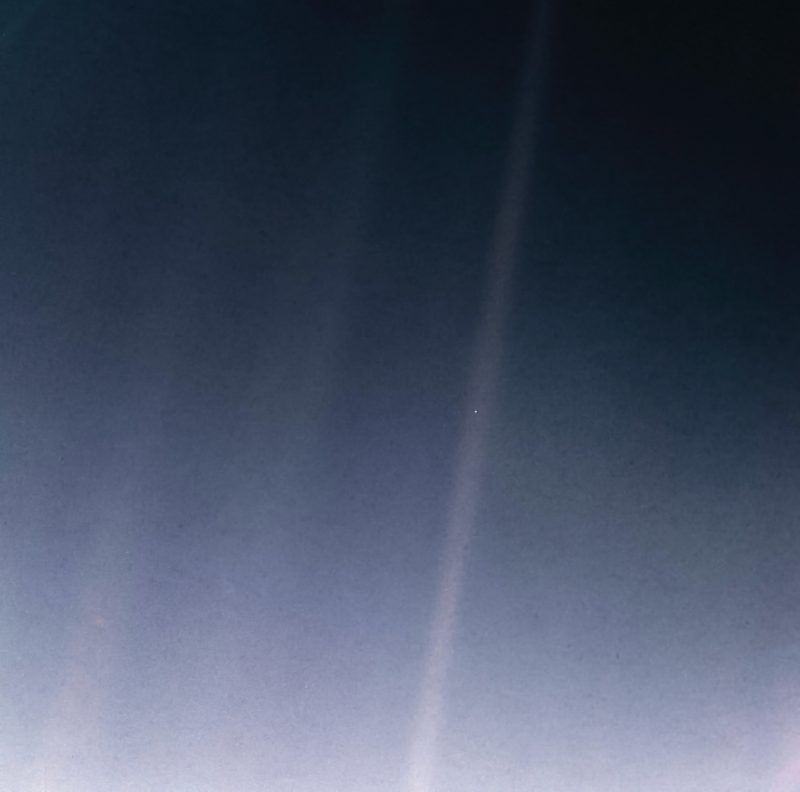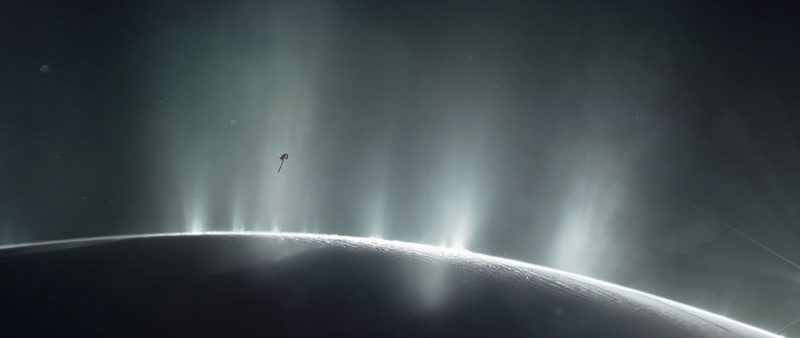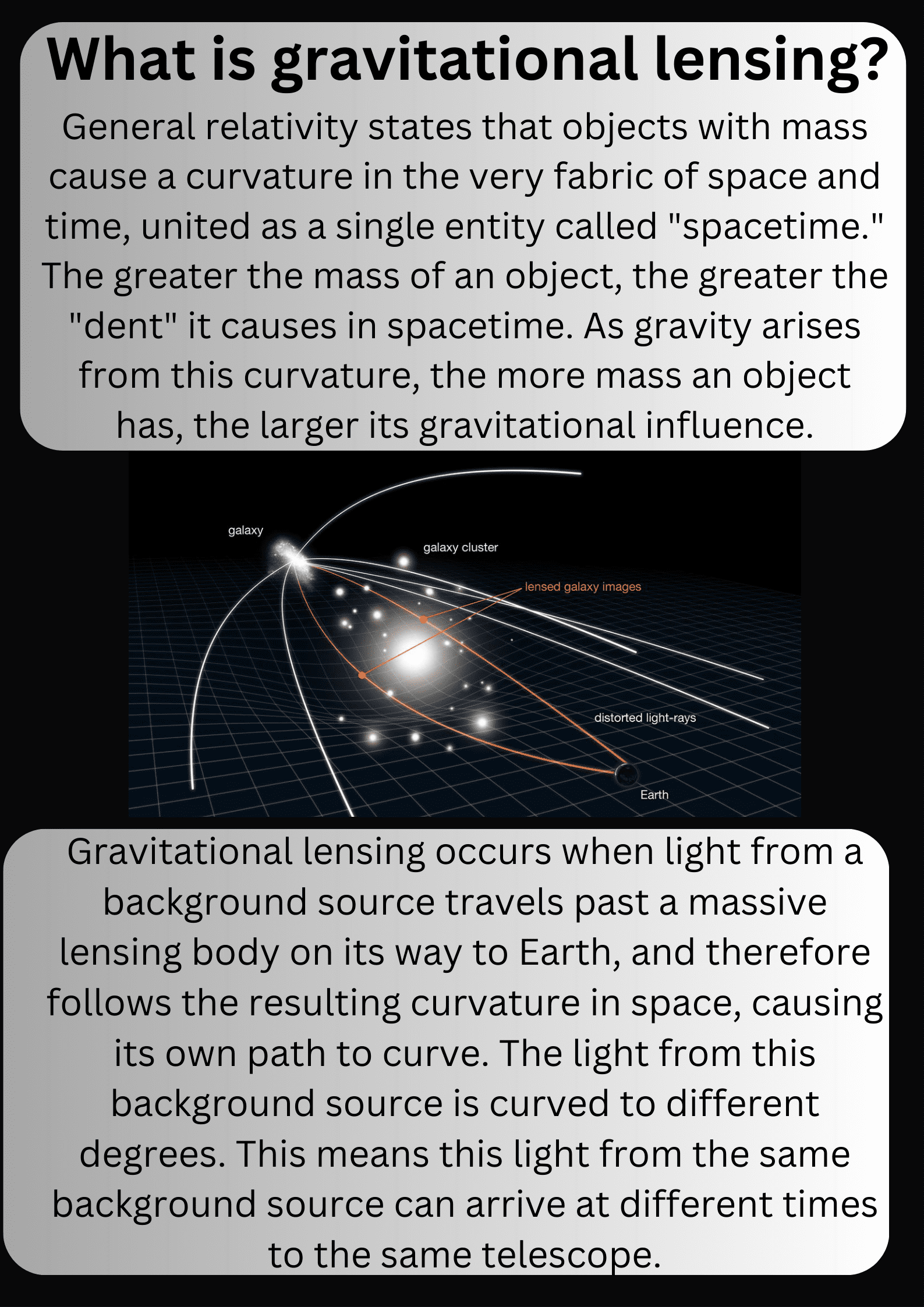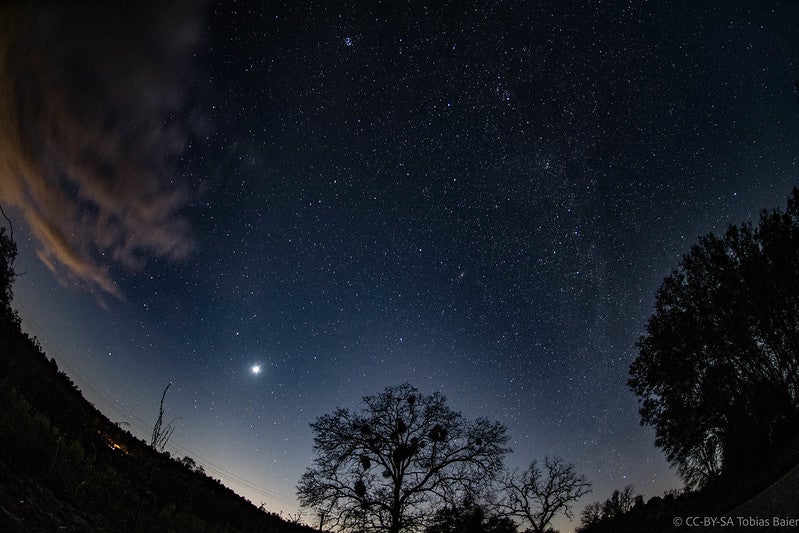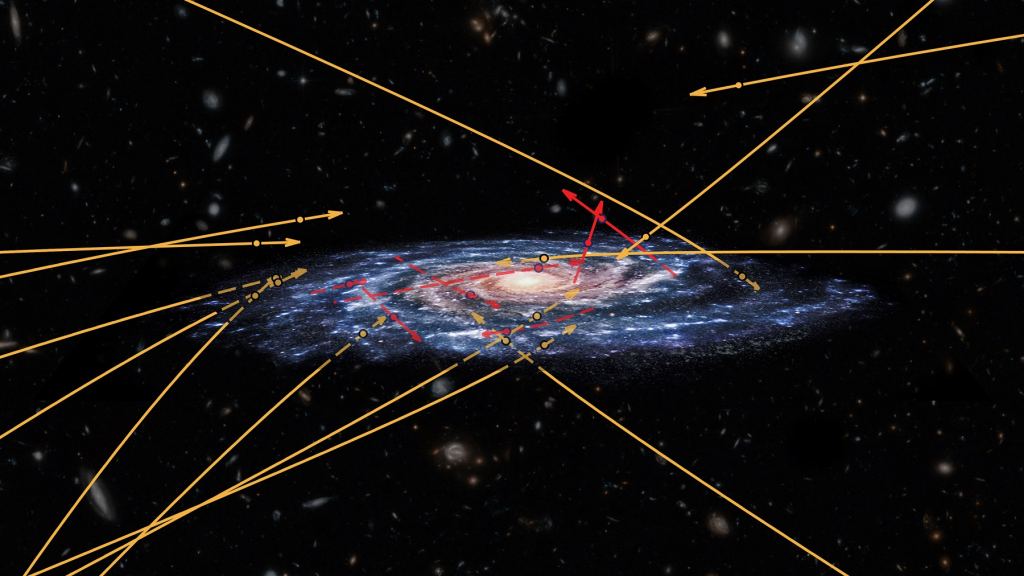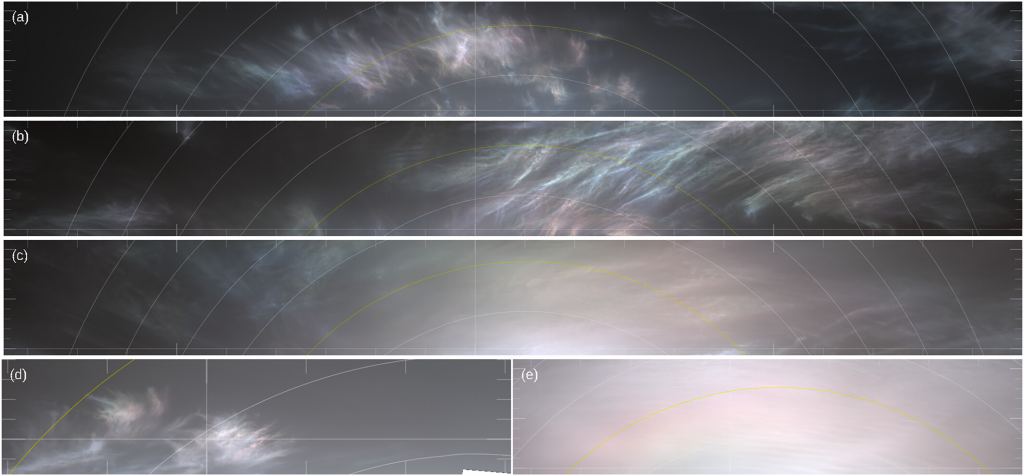Pale Blue Dot 35 years later: Earth in a sunbeam
View larger. | In this image from Voyager 1 – acquired on February 14, 1990, from a distance slightly past the orbit of Saturn – planet Earth appears as a pale blue dot within the sunbeam, just right of center. As you can see, the blue glow of Earth occupies less than a single pixel so it’s not fully resolved. Image via NASA.
February 14, 1990: the Pale Blue Dot
The Voyager 1 spacecraft, out near Saturn, took this iconic image of Earth 35 years ago. It turned out to be one of the most memorable images ever taken from space. Astronomer Carl Sagan wrote in his 1994 book Pale Blue Dot:
Look again at that dot. That’s here. That’s home. That’s us. On it everyone you love, everyone you know, everyone you ever heard of, every human being who ever was, lived out their lives. The aggregate of our j...
